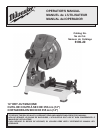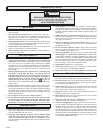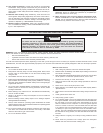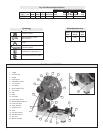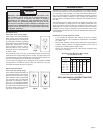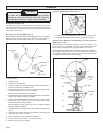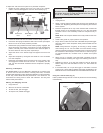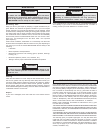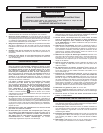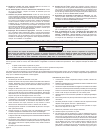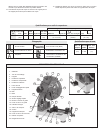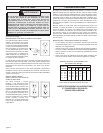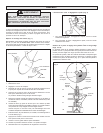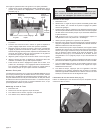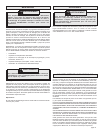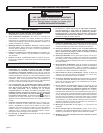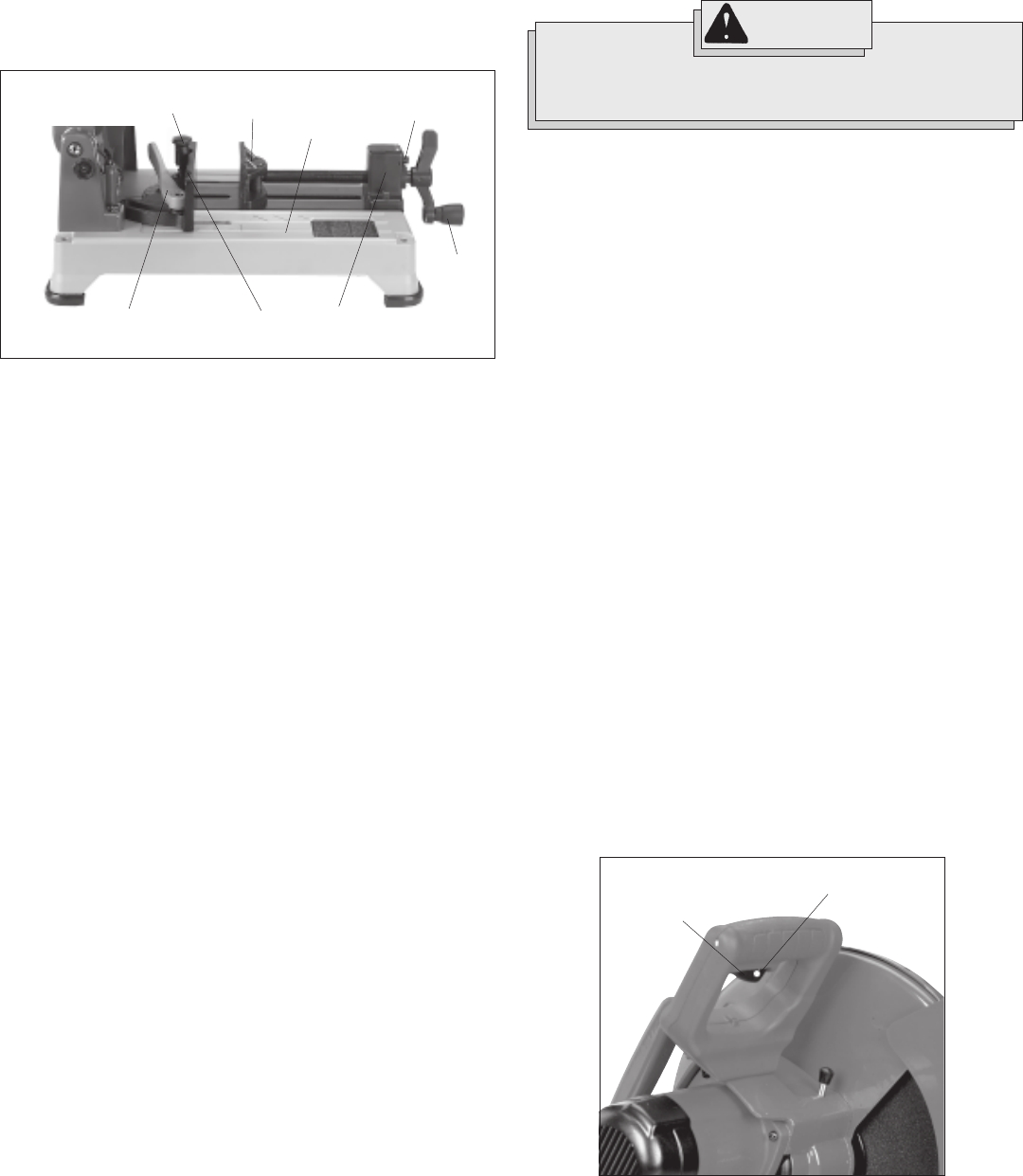
page 7
Selecting a Workpiece
The MILWAUKEE 14” Dry-Cut Machine is designed to cut various types
of ferrous and non-ferrous metals, including mild steel, structural
members and steel studs. Cutting hardened materials is not recommended,
as this may reduce blade life and performance. The machine is not
recommend for cutting wood or other soft materials. This may also
reduce blade performance.
Starting and Stopping the Tool
1. Plug in the tool.
2. Stand out of the line of the blade.
3. To start the tool, pull the trigger.
4. To stop the tool, release the trigger.
To adjust the vise and fence system for a particular workpiece:
1. Rotate the quick release lever fully to the left to the “release”
position. This will disengage the vise from the threads (Fig. 4).
2. Loosen the fence lock lever that holds the fence firmly in place.
3. Push down the spring loaded fence bolt and move the quick adjust
fence into one of the three positions provided.
4. Release the spring loaded fence bolt. When properly engaged, the
fence should click into position. If the fence is not fully engaged into
position, manually move it back and forth until it clicks into place. If
the fence does not click into place, repeat step 3.
5. Adjust the fence to the desired angle and tighten the fence lock
lever.
6. Adjust the vise plate by moving the vise handle in or out as needed
to fit the workpiece.
7. Rotate the quick release lever to the right to the “lock” position. This
will engage the threads and lock the vise. To completely lock the
vise, turn the vise handle clockwise until the workpiece is properly
secured.
Fig. 4
Vise plate
Quick release
lever
Vise
Vise
handle
Quick adjust
fence
Spring loaded
fence bolt
Fence lock
lever
Base
Making a Cut
1. Unplug the tool.
2. Select a cutting angle and position the fence and vise assembly as
needed, see “Supporting the Workpiece and Adjusting the Vise and
Fence System”.
3. Place the workpiece flat on top of the machine base. Position the
thinnest section of the workpiece facing up. Turn the vise handle
clockwise until the vise assembly holds the workpiece firmly in
place.
NOTE: Make sure the quick release lever is fully rotated to the “lock”
position.
4. Check lower guard for proper position and operation.
5. Plug in the tool, stand out of the line of the blade and pull the trigger.
Allow the motor to reach full speed. Slowly lower the blade into the
workpiece.
NOTE: Always start the cut gently; do not bang or bump a blade
when starting the cut. For the safest and most efficient cutting,
make sure that the centerline of the blade hub is in line with or behind
the centerline of the workpiece, toward the rear of the tool (Fig 3).
To maximize blade life, increase force on handle until sparks
subside.
6. When the cut is complete, raise the blade completely from the
workpiece before releasing the trigger and allowing the motor to
stop.
7. Restarting in mid-cut. If you stop the machine in mid-cut, allow the
blade to stop, then back the blade out of the cut. Then restart the
machine.
8. If the blade stalls, do not pull the trigger. A dull blade or excess
pressure may cause stalling. Release the trigger immediately if the
blade binds or the machine stalls and remove the blade from the cut.
WARNING!
To reduce the risk of injury or damage to the tool, do not use
the spindle lock lever to stop the spindle while the tool is
in use or is coasting after shut-off.
Fig. 5
Lock-out hole
Trigger
Using the Lock-out Hole (Fig. 5)
Insert a padlock through the lock-out hole to prevent the tool from starting
unintentionally.



